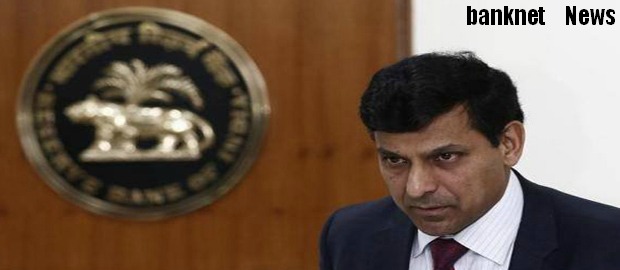
Third Bi-Monthly Monetary Policy Statement, 2014-15 By Dr. Raghuram G. Rajan, Governor, RBI - 5th August 2014
Monetary and Liquidity Measures
On the basis of an assessment of the current and evolving macroeconomic situation, it has been decided to:
keep the policy repo rate under the liquidity adjustment facility (LAF) unchanged at 8.0 per cent;
keep the cash reserve ratio (CRR) of scheduled banks unchanged at 4.0 per cent of net demand and time liabilities (NDTL);
reduce the statutory liquidity ratio (SLR) of scheduled commercial banks by 50 basis points from 22.5 per cent to 22.0 per cent of their NDTL with effect from the fortnight beginning August 9, 2014; and
continue to provide liquidity under overnight repos at 0.25 per cent of bank-wise NDTL and liquidity under 7-day and 14-day term repos of up to 0.75 per cent of NDTL of the banking system.
Consequently, the reverse repo rate under the LAF will remain unchanged at 7.0 per cent, and the marginal standing facility (MSF) rate and the Bank Rate at 9.0 per cent.
Assessment
2. Since the second bi-monthly monetary policy statement of June 2014, global economic activity has been picking up at a modest space from a sharp slowdown in Q1. Investor risk appetite has buoyed financial markets, partly drawing strength from assurances of continuing monetary policy support in industrial countries. Portfolio flows to emerging market economies (EMEs) have risen strongly. This implies, however, that EMEs remain vulnerable to changes in investor risk appetite driven by any reassessment of the future path of US monetary policy or possible escalation of geopolitical tensions.
3. Sentiment on domestic economic activity appears to be reviving, with incoming data suggesting a firming up of industrial growth and exports. The June round of the Reserve Bankís industrial outlook survey also points to improvement in business expectations in Q2. Leading indicators of the services sector are mixed, although there are early signs of modest strengthening of corporate sales and business flows. While the initial slow progress of the monsoon and its uneven spatial distribution raised serious concerns regarding agricultural production, these have been mitigated, though not entirely dispelled, by the pick-up in the monsoon through much of the country in July. The implementation of government policy actions that have been announced should create a congenial setting for a steady improvement in domestic demand and supply conditions.
4. Retail inflation measured by the consumer price index (CPI) has eased for the second consecutive month in June, with a broad-based moderation accompanied by deceleration in momentum. Higher prices of vegetables, fruits and protein-based food items were offset by the muted increase in the prices of non-food items, particularly those of household requisites and transport and communication. CPI inflation excluding food and fuel decelerated further, extending the decline that began in September 2013. However, with some continuing uncertainty about the path of the monsoon, it would be premature to conclude that future food inflation, and its spill-over to broader inflation, can be discounted.
5. Liquidity conditions have remained broadly stable, barring episodic tightness on account of movements in the cash balances of the Government maintained with the Reserve Bank. While the systemís recourse to liquidity from the LAF, and regular and additional term repos has been around 1.0 per cent of the NDTL of banks, access to the MSF has been minimal and temporary. In order to manage transient liquidity pressures associated with tax outflows and sluggish spending by the Government, the Reserve Bank injected additional liquidity aggregating over ` 940 billion through nine special term repos of varying maturities during the months of June and July. Despite the reduction in the export credit refinance effected in early June, average utilisation of the facility has only been around 70 per cent of the available limit. The Reserve Bank will review existing liquidity arrangements and continue to monitor and manage liquidity to ensure adequate flow of credit to the productive sectors.
6. With the buoyancy in export performance sustained through Q1, the trade deficit has narrowed from its level a year ago. While oil imports rose in June partly on higher international crude prices, gold import growth picked up in response to some liberalization of import restrictions, and non-oil non-gold import growth has turned positive since May. Turning to external financing, all categories of capital flows have been buoyant. Surges in capital inflows in excess of the current account financing requirement and the repayment of swaps by oil marketing companies have bolstered international reserves.
>> GO NEXT TO PAGE 2







